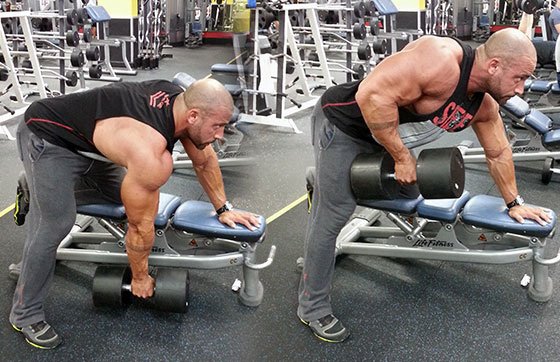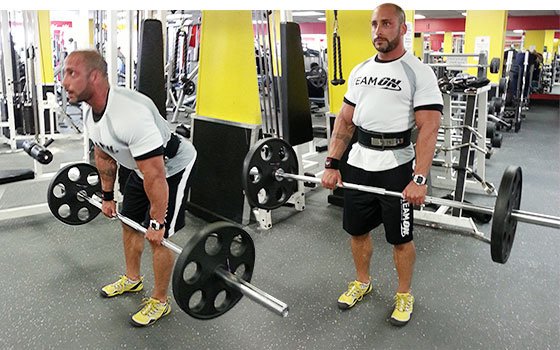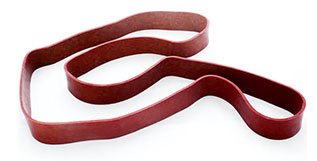Q
Hey Noah, I'm pumped about the size I've been gaining, but I feel like I should be stronger. What's the story?
Strength is an intriguing and sometimes mystifying goal of one's training regimen. Many people don't understand where strength comes from or how it relates to hypertrophy and building a physique.
I'm well aware that many people are here to learn how to get bigger, but the truth is that getting stronger goes hand in hand with getting bigger. An increase in strength does not always lead to an increase in size, but an increase in strength will lead to your ability to increase size.
This increase in size capacity is due to many different factors, but for the purpose of this article we will concentrate on the recruitment of motor units.
Motor Units and Muscle Fibers
A motor unit consists of a motor neuron and all the muscle fibers to which that that neuron connects. Increased strength is a direct result of better control and use of the central nervous system (CNS) and its ability to turn on your muscles' motor units. When under a light load, the CNS will only turn on the amount of motor units necessary to accomplish the required task.
Your body works this way because it's lazy and it likes to conserve energy at all times. Often, I hear bodybuilders refer to this laziness as the "mind-muscle connection." I don't like to call it that because it has devolved weightlifting into muscle squeezing. Many people lift light weight and concentrate on the contraction instead of moving actual weight. Although this technique is good for hypertrophy, strength gains will be harder to come by.

To get stronger, you need to get better at turning on synergistic motor units. The plasticity of motor units is much greater than the plasticity of muscle, which means the ability of the nervous system to adapt to change is quicker and more efficient than the actual growth of the muscle. That's how smaller, less muscular guys are still able to crush a huge amount of weight.
A true strength program and a strength-bodybuilding program will differ. If you're on a true strength program, you probably won't do more than five reps in a set. On a bodybuilding program, you'd more than likely do somewhere between 8 and 12 reps in a set.
On the other hand, a strength-bodybuilding program, like the one I've developed, includes both high- and low- rep days. That's why I train both very heavy and lighter in the same week—to be both big and strong.
Maximum Force Output
If you're training for strength, the major question becomes, "How do I recruit all of my motor units at the same time to produce maximum force and thus maximum strength?" There are a few different factors that we can concentrate on to get more motor unit recruitment: the percentage of your one-rep max (1RM), the speed with which you move the weight, and progressive overload. You need to keep all three of these pivotal points in mind if you want to increase strength.
Using Your 1RM
There are no two ways about it, this is the reason we lift heavy: In order to recruit as many motor units as possible we must put our body under as much stress as possible. Your lazy, lazy, lazy body wants to conserve energy. Don't let it. You recruit many, many more muscle fibers doing a heavy set of three than you would putting yourself under weight you can do 12 times every time.
Lifting Heavy

Strive to lift weight that is about 80 percent of your 1RM. If you're going lighter, choose weight that's 50-60 percent of your 1RM.
When you lift heavy, strive to lift weight that is about 80 percent of your 1RM. If you're going lighter, choose weight that's 50-60 percent of your 1RM.
Watch the best powerlifters in the world. They move the bar reallyfast, even when they do their lighter warm-up sets. They continue to try to move the bar quickly when the weight gets heavier. The point of the speed is to fire every motor unit they can. Big lifters want all hands on deck so they can move the most weight.
This principle must carry over into your lighter weight-training sessions. Even though you are lifting lighter weight, you should be moving it at a fast pace during the concentric portion of the lift.
Progressive Overload
A plateau is inevitable, but it won't ruin your life. When you're stuck, incorporate progressive overload. In other words, use more reps or more weight during your workouts. Someone took this theory and turned it into a marketing juggernaut by deeming it "muscle confusion."

In reality, this principle is the keystone to any successful training program and is as old as weightlifting itself. A simple change in the weight load or rep range is more than sufficient confusion. There's no need to stand on a BOSU ball to do squats.
More Motor Units, More Strength
Incorporate one or two of the following techniques into your routine. Doing so will tax your CNS and may require a bit of extra rest. I suggest adding them slowly and infrequently at first.
As your body adapts, incorporate more. These are by no means the only strength techniques out there, but they should help you get started.
Chains or Resistance Bands

Do your speed work with chains or resistance bands. They make the weight heavier as the rep nears completion. This change in weight forces you to be explosive from start to finish and will increase your ability to recruit more motor units. If you don't have any bands or chains, get some. They're great tools.
Incorporate Negative Reps
Negative reps can be done a few different ways, but they always require a spotter. These are my two favorite techniques.
One is to overload the bar with more weight than you can handle. Have your spotter help you move the weight during the concentric portion of the lift. It's your job to work during the negative—lengthening portion—of the lift. Bring the bar back down slowly, concentrating on controlling the weight.
You can also have a partner actually pull or push the weight down during the negative portion and then help you up on the contraction. This second method usually works well with the bench press.
Half Reps
You're damn right I just said half reps! I'm not talking about the knee bends that the 90-year-old man does. I'm telling you to load weight you can't normally handle and do half reps with it. Powerlifters will do this on the bench and call it a board press, on deadlifts and call them rack pulls, and on squats calling them box squats.
Half reps are important for your nervous system. They help it adapt to heavy-ass weight! Keep in mind though, these are supplemental exercises. You must also do full ROM on regular sets.


